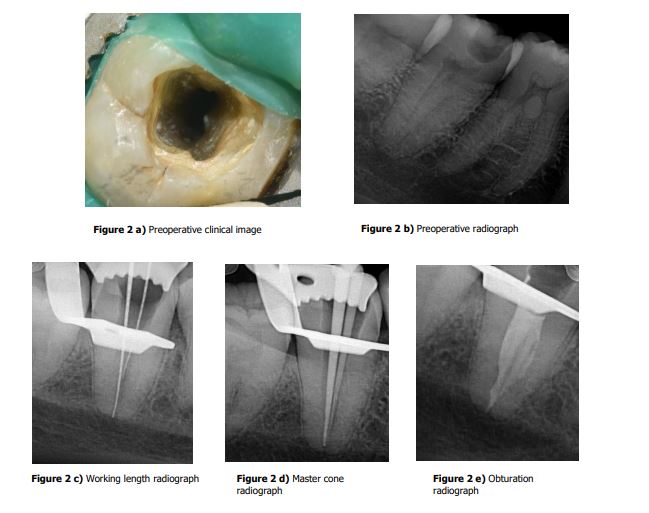
Objective
Atypical root canal morphologies, such as the C-shaped canal commonly found in mandibular second molars, present persistent diagnostic and therapeutic challenges. These configurations often go undetected due to their complex anatomy, increasing the risk of incomplete debridement, inadequate obturation, and ultimately, treatment failure. Accurate diagnosis, strategic planning, and clinical proficiency, along with the use of advanced diagnostic tools, are essential for achieving successful outcomes. This report presents clinical cases that highlight how effective treatment can be achieved while preserving tooth function through the integration of preoperative radiographs, magnification, and appropriate instrumentation and obturation systems.
Materials and Methods
This case report presents three clinical scenarios in which preoperative assessment using radiographs and magnification loupes facilitated accurate identification of C-shaped canals and their anatomical variations. Management relied heavily on thorough chemical debridement rather than mechanical instrumentation. Bioceramic sealers were selected for obturation due to their excellent flow properties, ability to set in the presence of moisture, bioactivity, enhanced sealing ability, and inherent antimicrobial characteristics.
Results
All three cases achieved successful clinical outcomes. The patients remained asymptomatic throughout the follow-up period, and radiographic evaluation revealed progressive signs of periapical healing.
Conclusion
The effective management of C-shaped canal systems is achievable through precise diagnosis, enhanced visualisation using magnification, and the use of modern endodontic technologies. Advanced rotary instrumentation, irrigant activation devices, and reliable obturation techniques—such as bioceramic sealers and thermoplasticized filling—play a crucial role in achieving predictable and lasting treatment success.
Keywords: C-shape canal anatomy, bioceramic sealer,irrigant, mandibular second molar, thermoplasticised obturation.
1. Cooke HG et al. J Am Dent Assoc. 1979;99(5):836–839. [DOI:10.14219/jada.archive.1979.0402]
2. Eddie Nagadi et al. Clinical, Cosmetic and Investigational Dentistry 2025;121-134. [DOI: 10.2147/CCIDE.S506763]
3. Seo MS et al. Int Endod J. 2004;37(2):139–144. [DOI:10.1111/j.01432885.2004.00772]
4. Jafarzadeh H et al. J Endod. 2007;33(5):517–523. [DOI:10.1016/j.joen.2007.01.005]
5. Fan B et al. Journal of Endodontics.2004;30(12):899-903. [DOI:10.1097/01.don.0000136208.04003.71]
6. Raisingani D et al. Int J Clin Pediatr Dent. 2014;7(1):35–39. 23. [DOI:10.5005/jp-journals-10005-1242]
7. Kim Y et al. Scanning. 2018;34:251–62. [DOI: 10.1155/2018/2516832]
8. Gautam S, et al. NMCJ. 2022;24:68–74. [DOI:10.3126/nmcj.v24i1.44144.]
9. Berman L et al. Cohen’s Pathways of the Pulp. 12th ed. Vol. 20. Philadelphia, Pennsylvania: Elsevier; 2021:2 34. [Available from: https://shop.elsevier.com/books/cohens-pathways-of-the-pulp/berman/978-0-323-67303-7]
10. Kato A et al. Int Endodontic J. 2014;47:1012 1033. [DOI:10.1111/iej.12256]
11. Lo Giudice et al.Int J Dent. 2018;2018:1 7. [DOI:10.1155/2018/2514243]
12. Plotino G et al. J Appl Oral Sci. 2019;27. [DOI:10.1590/1678-7757-2018-0045]
13. DeLong C et al. J Endod. 2015;41:385–8. [DOI: 10.1016/j.joen.2014.11.002.]
14. Gharechahi M et al. BMC Oral Health. 2024 May 12;24(1):554. [DOI: 10.1186/s12903-024-04334-2.]
Nishi S, Suresh S. Navigating the C-Shape Canals: A Case Series on Endodontic Treatment with Bio-ceramic Sealers. Oral Sphere J Dent Health Sci. (2025); 1(3): 166-172. https://doi.org/10.63150/osjdhs.2025.14